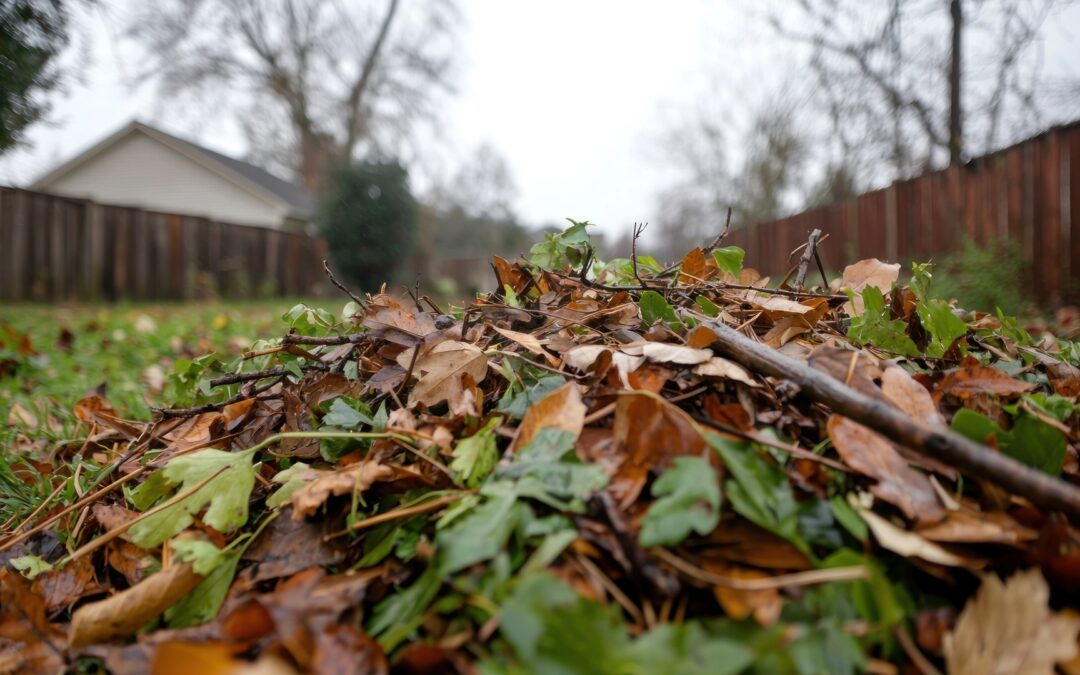As July winds down in Colorado Springs, your yard has likely taken a beating—from the high-altitude sun to unexpected hailstorms. Late summer is a transitional time, and getting a few things done now can make August far easier to manage. Whether you’re prepping for afternoon monsoons or just trying to stay on top of seasonal wear and tear, a little attention now goes a long way in keeping your outdoor space healthy and low-maintenance.
This checklist of end-of-July yard prep tasks is tailored specifically to the Colorado Springs climate. Use it to assess, refresh, and plan so you’re not caught off guard as the summer evolves.
1. Clear Debris from Storms and Wind Gusts
By late July, it’s common to find windblown branches, shredded leaves, or other debris scattered around your yard. Afternoon storms can make a mess, especially if you live near open space or older trees.
Take time to:
-
Remove broken twigs and leaf litter from gravel beds, patios, and hardscaping.
-
Shake out or rinse off hail-damaged plant material to prevent mold or rot.
-
Check your rain gutters and downspouts for clogs caused by debris.
Keeping pathways and planting areas clear not only improves appearance but also reduces moisture buildup and potential damage during August storms.
2. Assess Heat and Hail Damage
Colorado Springs’ late-July weather can shift rapidly between intense UV exposure and sudden hailstorms. Your yard may show signs of stress even if your plants are usually resilient.
Do a quick walk-through and look for:
-
Wilting or scorched leaves on native shrubs and perennials.
-
Bruising or breakage on stems or branches after hailstorms.
-
Brittle or discolored ground cover, especially in high-traffic areas.
Remove any fully dead plant material, but don’t over-prune. Damaged greenery may bounce back with a little support and shade, especially if it’s native to the region. For plants that look beyond recovery, make a note and consider replacing them with more drought- or hail-tolerant species next month.
3. Rake and Refresh Gravel or Mulch Beds
Rock-based landscaping is popular in Colorado Springs for a reason—it’s water-efficient and tough under the sun and storm. Still, by late July, even gravel gardens can start to look tired.
Here’s what you can do:
-
Rake gravel areas to redistribute the stones and smooth out dents or erosion.
-
Top off mulch if you notice bare spots or thinned-out coverage.
-
Pull visible weeds by hand or install a physical weed barrier under areas that need extra protection.
Avoid using any chemical herbicides or sprays, especially before monsoon season, when runoff can affect native plants and local soil health.
4. Check Drainage and Erosion Zones
With August storms on the horizon, now is a smart time to review how your yard handles heavy rain. Erosion and pooling water are common problems, especially in sloped or rocky yards.
Use these quick fixes to stay ahead of water damage:
-
Redirect runoff with dry creek beds, river rocks, or natural berms.
-
Clear blocked drainage pathways around patios, sheds, or side yards.
-
Add small boulders or edging to help contain gravel or mulch in heavy rains.
These minor adjustments can help protect your foundation and hardscape elements while maintaining the natural look of your outdoor space.
5. Protect Delicate Plants from the Next Heat Wave
Even hardy native plants can use a break during peak summer. If the forecast calls for more 90-degree days, consider giving some of your garden a bit of shade.
Here’s how to provide relief without installing anything permanent:
-
Use portable shade cloths or repurpose patio umbrellas for temporary cover.
-
Relocate potted plants into partial shade for the week.
-
Water early in the morning and adjust your drip irrigation if needed to avoid midday evaporation.
Colorado’s high elevation intensifies sun exposure, especially in exposed or west-facing yards. A little mid-summer protection can help keep plants vibrant through August.
6. Prep for Small Projects While the Weather’s Still in Your Favor
Late July is a great window to plan light upgrades or minor DIY projects. Temperatures are warm, the monsoons haven’t peaked yet, and days are still long enough to get things done after work.
Consider:
-
Installing decorative edging to define gravel or mulch zones.
-
Adding pavers or flagstones to extend a patio or create a walking path.
-
Updating outdoor seating or shaded areas for more late-summer comfort.
These changes don’t require a full landscape overhaul, but they can make a big difference in both function and appearance—especially before guests return in August or fall.
7. Take Inventory for Fall Planting and Repairs
Finally, use this time to make a list. What worked well this summer? What struggled in the heat? What areas could use attention before the weather turns cooler?
Start thinking about:
-
Replacing struggling plants with native perennials in September.
-
Upgrading irrigation components after the peak water-use season.
-
Scheduling repairs to walkways, patios, or pergolas before fall.
Colorado Springs’ growing season extends into early fall, so the choices you make now can help you transition smoothly into your next seasonal goals.
Wrap-Up: Stay Ahead of August with Just a Few Key Fixes
By handling these yard prep tasks now, you’re setting yourself up for a smoother August—one that’s less reactive and more enjoyable. Colorado Springs homeowners know the weather can shift fast, but that doesn’t mean your yard should suffer for it. A few simple steps—like clearing storm debris, refreshing gravel beds, and planning around the next heatwave—can make a big difference.
Stay a step ahead with free expert advice on yard care, landscaping, and seasonal maintenance. Our newsletter delivers valuable tips and updates directly to your inbox—no spam, just smart solutions.
Subscribe now and keep your outdoor space thriving, no matter the season.






